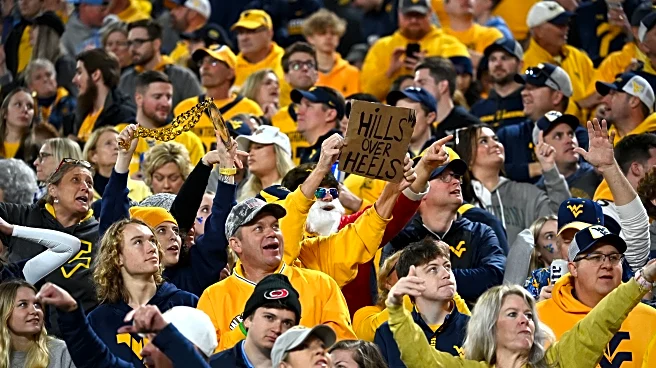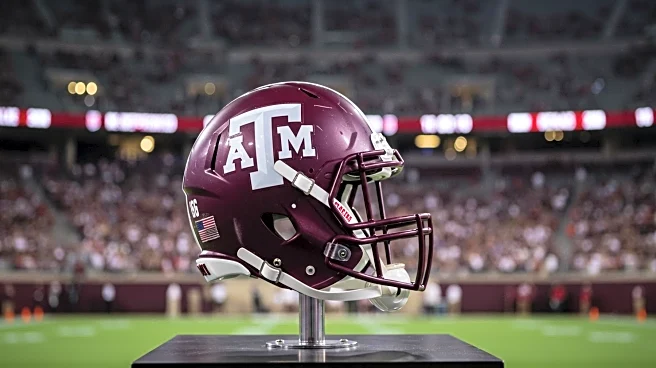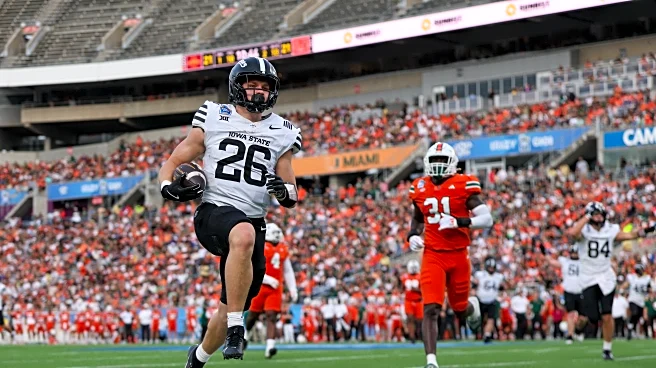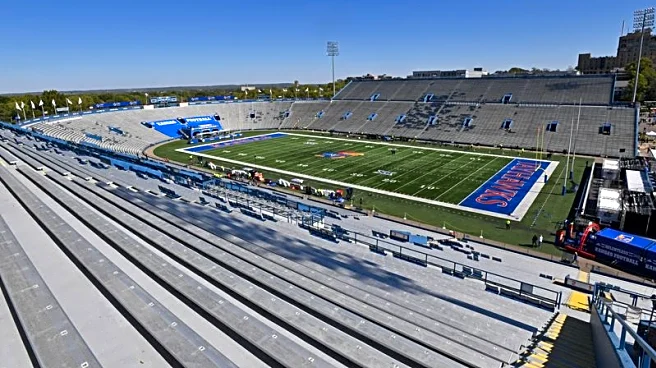What's Happening?
Texas Tech has introduced new uniforms to commemorate the 100th anniversary of its football program. The uniforms, which will be worn during the game against Kansas on October 11, feature a gold '100-Year' label and vintage-inspired logos. This announcement comes as Texas Tech is actively engaging in the Name, Image, and Likeness (NIL) era, having secured a commitment from 5-star offensive tackle Felix Ojo with a reported $5.1 million contract. The Red Raiders are investing heavily in their roster, with costs exceeding $28 million for the 2025 season, according to On3's Pete Nakos.
Why It's Important?
The unveiling of the anniversary uniforms highlights Texas Tech's commitment to celebrating its history while embracing the future of college football through NIL deals. The substantial financial investment in player contracts signifies a shift in college sports, where teams are leveraging NIL opportunities to attract top talent. This approach could redefine competitive dynamics within the Big 12 Conference, as Texas Tech aims to build a formidable team. The financial implications of such investments may influence other programs to adopt similar strategies, potentially altering recruitment and team-building processes across college football.
What's Next?
Texas Tech's aggressive NIL strategy may prompt reactions from other Big 12 teams and beyond, as they assess the impact of such investments on competitive balance. The upcoming season will test whether Texas Tech's financial commitments translate into on-field success. If the Red Raiders fail to win the Big 12, it could lead to scrutiny over the effectiveness of their spending. Additionally, the broader college football landscape may see increased NIL activity, with programs seeking innovative ways to attract and retain talent.
Beyond the Headlines
The focus on NIL deals raises ethical questions about the commercialization of college sports and the potential impact on student-athletes' academic experiences. As financial incentives grow, there may be concerns about the prioritization of athletics over education. Furthermore, the long-term sustainability of such high spending in college sports could be challenged, prompting discussions on the balance between financial investments and traditional values in collegiate athletics.













